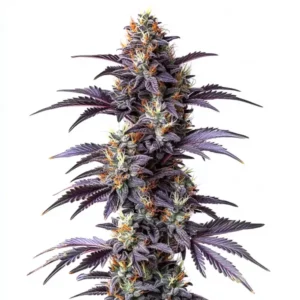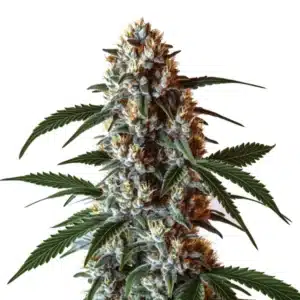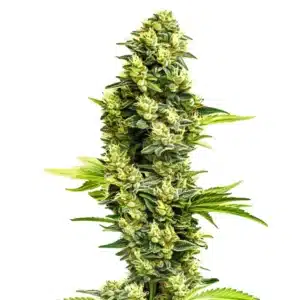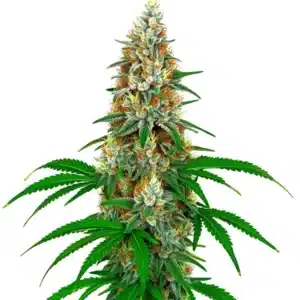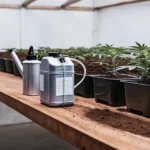
How Does Cannabis Absorb Nutrients?
Let’s dive into the fascinating process that allows cannabis plants to absorb nutrients. How does cannabis absorb nutrients? For both first-time seed buyers and experienced growers, comprehending this process can be a game-changer. Knowing how cannabis plants absorb nutrients can help you optimize your growing conditions and get the most out of your plants
Cannabis, like other plants, absorbs nutrients from the soil through its root system. The roots act as a conduit, drawing up water and nutrients from the soil and transporting them to the plant’s cells. This process is essential for the plant’s growth, development, and survival.
Recommended Strains
Mimosa
|
|
THC | 24% - 30% (High) |
|
|
Type | Feminized |
|
|
Yield | High |
|
|
Phenotype | 30% Indica / 70% Sativa |
Mimosa Cake Auto
|
|
THC | 22% - 24% (Medium) |
|
|
Type | Autoflowering |
|
|
Yield | High |
|
|
Phenotype | 40% Indica / 60% Sativa |
But how does it all work? A cannabis plant’s nutrient absorption mechanism is a complex process involving several stages. Let’s break it down into simple, easy-to-understand steps.
Process of Nutrient Absorption in Cannabis Plants
Cannabis plants absorb nutrients in a two-step process: passive absorption and active absorption.
During passive absorption, water in the soil moves into the roots through osmosis. This water, carrying dissolved nutrients, then travels up the plant through the xylem, a type of vascular tissue.
Active absorption, on the other hand, involves the plant using energy to actively transport nutrients from the soil into the roots. This process is facilitated by special proteins in the root cells.
How does cannabis absorb nutrients actively? The cannabis plant’s nutrient absorption mechanism utilizes proteins in the root cells, which bind to specific nutrients and use the plant’s energy to transport them across the cell membrane. This active absorption allows the plant to selectively uptake nutrients based on its needs.
The process of nutrient absorption in cannabis plants is a delicate balancing act. Any disruptions to the process can hinder the plant’s growth and development. Therefore, it is crucial to understand the mechanisms of nutrient absorption when growing cannabis.
Promos & Deals
Function of Nutrients in Cannabis Plant Growth: How Does Cannabis Absorb Nutrients?
Nutrients play a critical part in cannabis plant growth. They are involved in various biochemical reactions and processes, including photosynthesis, respiration, and the synthesis of proteins and DNA.
There are 16 essential nutrients that a cannabis plant needs to grow and thrive. These are split into two categories: macronutrients and micronutrients. Macronutrients, which the plant needs in larger quantities, include nitrogen, phosphorus, and potassium. Micronutrients, needed in smaller quantities, include iron, manganese, and zinc.
Comprehending how cannabis plants absorb nutrients is pivotal to ensuring that your cannabis plants get the right mix of macronutrients and micronutrients. This knowledge can help you create a nutrient-rich environment that promotes healthy plant growth and maximizes yield.
Moreover, the importance of nutrients in cannabis plant growth extends beyond basic biological functions. Certain nutrients can also influence the plant’s resistance to pests and diseases, affect the production of cannabinoids, and contribute to the overall quality of the cannabis product.

Factors Affecting Nutrient Absorption in Cannabis
Several factors can affect nutrient absorption in cannabis. These include the pH level of the soil, the temperature, and the availability of water.
The pH level of the soil can affect the availability of nutrients. For example, if the soil is too acidic or too alkaline, certain nutrients may become unavailable to the plant. The temperature can also impact nutrient absorption, as colder temperatures can slow down the process. Lastly, water availability can affect nutrient absorption, as the nutrients need to be dissolved in water to be absorbed.
Comprehending the factors affecting nutrient absorption in cannabis can guide growers in creating the ideal conditions for their plants. Maintaining the right pH balance, temperature, and water availability can ensure that nutrients are readily available and easily absorbed by the cannabis plants.
Furthermore, comprehending how cannabis absorbs nutrients under different conditions can help growers troubleshoot issues and make appropriate adjustments. How does cannabis absorb nutrients? For instance, if a cannabis plant is showing signs of nutrient deficiency despite being fed a nutrient-rich solution, the problem might lie in the pH level of the soil or the temperature conditions.
- OG Kush from Blimburn Seeds is a strain known for its tolerance to different growing conditions, making it a versatile choice for growers dealing with varying nutrient absorption factors.
- Green Crack from Blimburn Seeds is a strain that thrives in nutrient-rich soil, making it a great choice for growers looking to maximize nutrient absorption.
- Gorilla Glue 4 from Blimburn Seeds is a strain that requires a well-balanced nutrient supply, highlighting the importance of knowing nutrient absorption in cannabis.
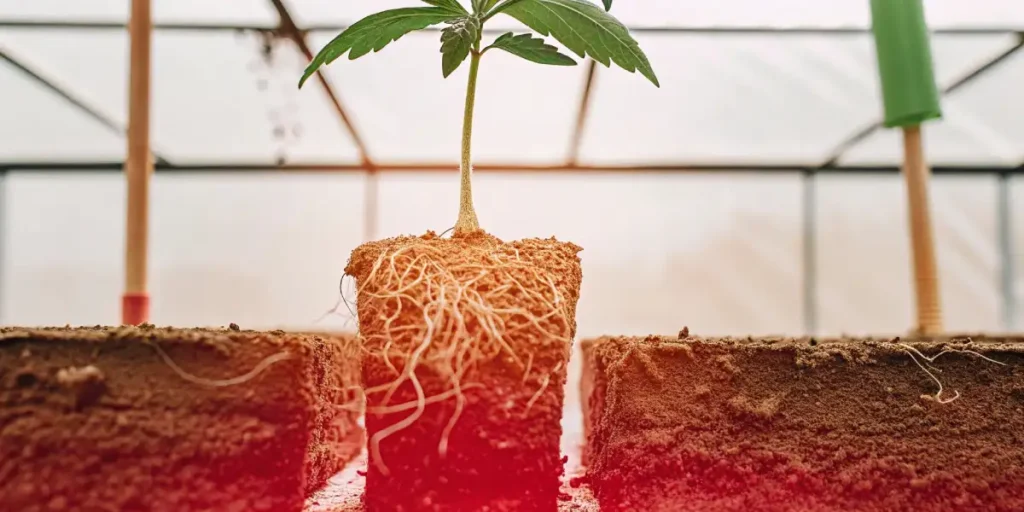
FAQs
How does cannabis absorb nutrients?
How does cannabis absorb nutrients? Cannabis absorbs nutrients from the soil through its root system. This process involves both passive absorption, where water carrying dissolved nutrients moves into the roots through osmosis, and active absorption, where the plant uses energy to transport nutrients from the soil into the roots.
Once inside the roots, the nutrients are transported to the plant’s cells via the xylem, a type of vascular tissue. This nutrient delivery is critical for the plant’s growth, development, and survival.
By comprehending the process of nutrient absorption in cannabis plants, growers can better manage their growing conditions. This can result in healthier plants and higher yields. Additionally, this knowledge can also help growers troubleshoot potential issues, such as nutrient deficiencies or toxicities.
Considering how cannabis absorbs nutrients is essential in managing a successful cannabis cultivation. By grasping the process, growers can ensure that their plants receive the necessary nutrients in the appropriate amounts and at the right time for optimal growth and development.
What nutrients do cannabis plants need?
Cannabis plants require 16 essential nutrients to grow and thrive. These nutrients are split into two categories: macronutrients and micronutrients.
Macronutrients, which the plant needs in larger quantities, include nitrogen, phosphorus, and potassium. Micronutrients, needed in smaller quantities, include elements like iron, manganese, and zinc. Each of these nutrients plays a crucial part in various biochemical reactions and processes in the plant.
By providing the cannabis plant with these essential nutrients, growers can ensure the plant’s health and vitality. The importance of nutrients in cannabis plant growth cannot be overstated; without them, the plant would not be able to perform basic biological functions, let alone produce high-quality buds.
It is important to note that while all these nutrients are essential, the plant requires them in different quantities. Overfeeding or underfeeding certain nutrients can lead to imbalances that can adversely affect the plant’s health and yield.
What factors affect nutrient absorption in cannabis?
How does cannabis absorb nutrients? Several factors can affect nutrient absorption in cannabis, including the pH level of the soil, the temperature, and the availability of water. The pH level can impact the availability of nutrients in the soil, while temperature can affect the rate of nutrient absorption. Water availability is also crucial as nutrients need to be dissolved in water to be absorbed by the plant.
As a grower, it’s important to monitor these factors and make necessary adjustments to ensure optimal nutrient absorption. This could mean adjusting the pH level of the soil, maintaining an optimal temperature, or ensuring adequate watering.
These factors affecting nutrient absorption in cannabis can be influenced by the grower’s management practices. For instance, growers can adjust the pH level of the soil to make it more conducive for nutrient absorption. Proper watering practices can also ensure that the roots have access to enough water for nutrient uptake.
Temperature plays an important part in the plant’s metabolic processes, which can influence how quickly and efficiently the plant is able to absorb nutrients. By maintaining the right temperature, growers can optimize the rate of nutrient absorption in their cannabis plants.
Can I control how my cannabis plant absorbs nutrients?
Yes, growers can influence how their cannabis plants absorb nutrients. This can be done by adjusting the growing conditions, such as the pH level of the soil, the temperature, and the watering schedule.
It’s also essential to provide a balanced supply of nutrients. Overloading the soil with nutrients can be harmful to the plant and can lead to nutrient burn, while a lack of nutrients can lead to nutrient deficiency. Both scenarios can negatively impact the plant’s growth and yield.
Given the cannabis plant’s nutrient absorption mechanism, growers can adopt strategies to modify how their plants absorb nutrients. For instance, by carefully managing the watering schedule, growers can influence the rate of passive absorption. Similarly, by providing the right amount of light, growers can influence the rate of active absorption, which is energy-dependent.
Choosing the right soil or growing medium can also impact nutrient absorption. Different soils have different nutrient-holding capacities and pH levels, which can influence nutrient availability and absorption. Therefore, growers can control nutrient absorption by selecting an appropriate growing medium for their cannabis plants.
What are some recommended cannabis strains for improving nutrient absorption?
Several cannabis strains can help growers better understand nutrient absorption. These include OG Kush, Green Crack and Gorilla Glue 4, all available at Blimburn Seeds
OG Kush is known for its tolerance to different growing conditions, while Green Crack thrives in nutrient-rich soil. Gorilla Glue 4, on the other hand, requires a well-balanced nutrient supply. Trying out different strains can provide valuable insights into the importance of nutrients in cannabis plant growth.
By growing different strains, growers can gain a better knowledge of how cannabis plants absorb nutrients under different conditions. How does cannabis absorb nutrients? For instance, some strains may thrive in slightly acidic conditions, while others may require a more neutral pH for optimal nutrient absorption. This can provide growers with valuable insights to fine-tune their growing practices and maximize their yield.
Furthermore, different strains may have different nutrient requirements. By monitoring the growth and health of different strains under the same conditions, growers can gain insights into the nutrient preferences of different cannabis strains. This can help them tailor their nutrient feeding schedules to the specific needs of each strain, leading to healthier plants and better yields.



